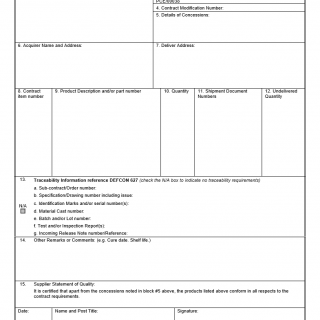Certificate of Conformity
A Certificate of Conformity is a legal document used to certify that a product meets certain standards or regulations. The main purpose of this form is to provide proof that the product is safe and compliant with relevant laws and regulations.
The form typically consists of an introduction that identifies the product and the manufacturer, as well as the specific standards or regulations that the product conforms to. It then provides a detailed description of the product, including its features and specifications, as well as any testing or certification that has been conducted.
Important fields to consider when completing the form include the product name and model number, the manufacturer's name and address, and the specific standards or regulations that the product conforms to. It is also important to include any relevant documentation, such as test reports or certification documents.
The parties involved in the form are typically the manufacturer and the regulatory agency or certification body responsible for enforcing the relevant standards or regulations. It is important to ensure that the form accurately reflects the product's compliance with these standards or regulations, as any errors or omissions could result in legal consequences.
Strengths of this form include its ability to provide proof of compliance with relevant regulations and standards, which can help manufacturers to market their products more effectively and avoid legal liability. Weaknesses may include the complexity and variability of different regulations and standards, which can make it difficult to ensure compliance across different markets and jurisdictions. Opportunities for improvement may include the development of more streamlined and standardized certification processes.
Examples of related and alternative forms may include product test reports, safety certifications, or declarations of conformity. The main difference between these forms is the specific requirements and regulations that they address, as well as the level of detail and documentation required.
To fill and submit the form, the manufacturer should gather all relevant information and documentation, and then submit the form to the relevant regulatory agency or certification body. A copy of the form should be kept on file by both the manufacturer and the regulatory agency or certification body.
In conclusion, a Certificate of Conformity is an important tool for manufacturers to demonstrate compliance with relevant regulations and standards. By providing proof of compliance, manufacturers can ensure the safety and quality of their products and avoid legal liability.

